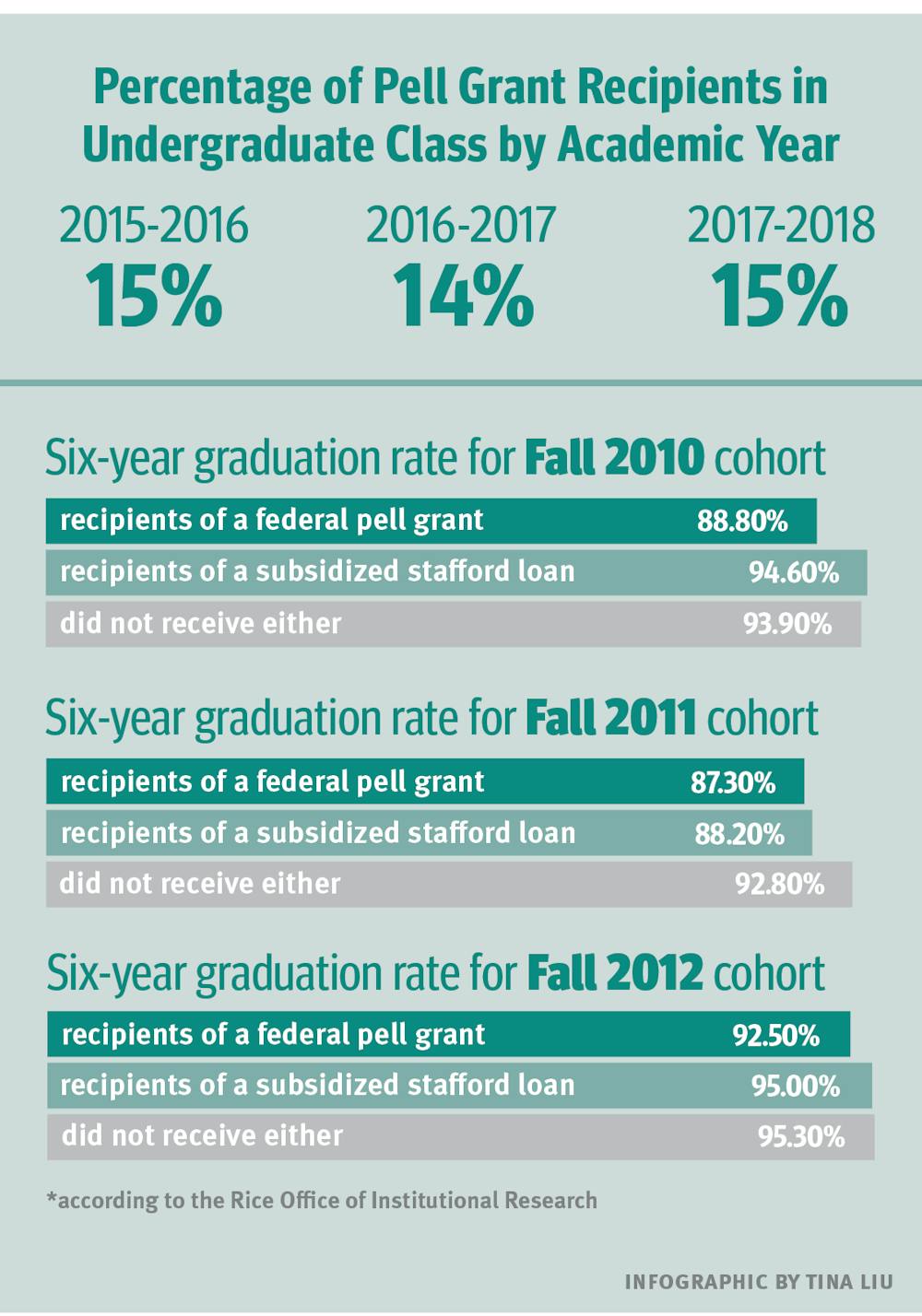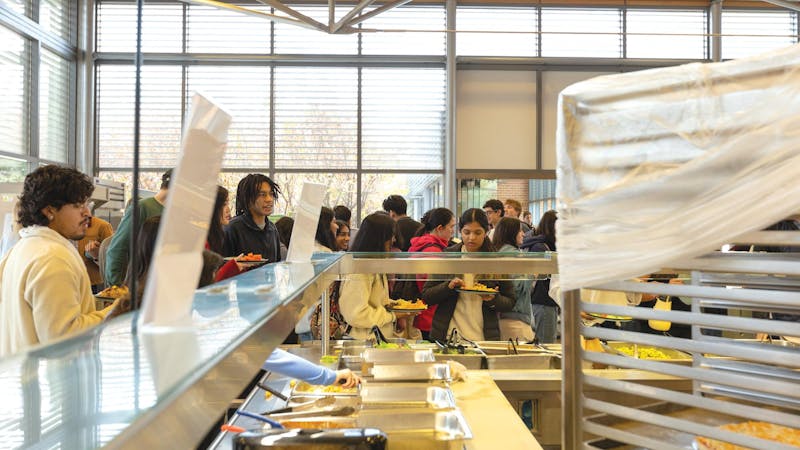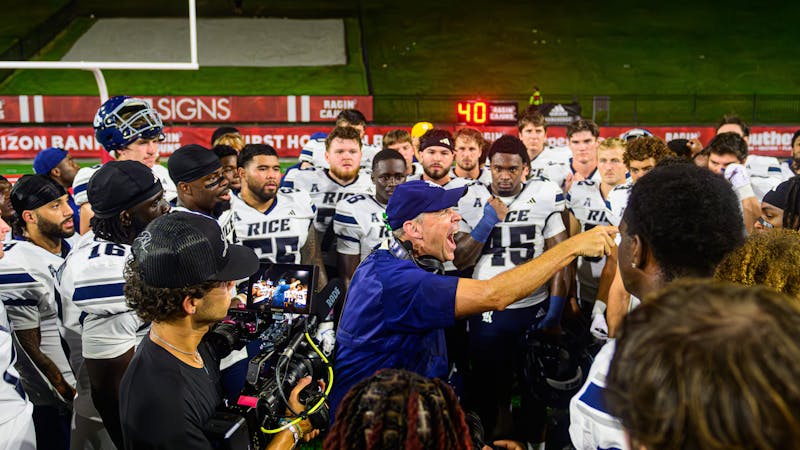Pell Grant recipient graduation rates lag behind university average

Graduation rates for Pell Grant students at Rice have trailed the university average for the past three years, according to the 2019 common data set released in May by the Office of Institutional Research. The finding highlights issues in social mobility and underscores the university’s No. 204 placement in the U.S. News and World Report’s Top Performers on Social Mobility.
Differing graduation rates
Comparing students who matriculated in 2012, 92.5 percent of those who received Pell Grants and 95.3 percent of those who received neither Pell nor Stafford Loans graduated within six years.
Figures for those who matriculated in 2011 show a similar disparity, with 87.3 percent of Pell and 92.8 percent of non-Pell/Stafford students graduating within six years, and for those who matriculated in 2010, 88.8 percent versus 93.9 percent, respectively.
While the graduation rates of Pell recipients have consistently trailed the university average, the disparities in graduation rates between Stafford loan recipients and students who received neither Pell nor Stafford remain more unclear.
This disparity has a direct effect on rankings, with Rice’s ranking in social mobility. According to U.S. News, the social mobility rankings were largely determined by the Pell Grant graduation rate performance, a metric that compares the six-year graduation rates between Pell students and non-Pell students.
Another component of this ranking is the percentage of Pell Grant students who graduate. Although this metric rose 5.2 percent in the last year to 92.5 percent, Pell graduation rates continually lagged behind the rest of the university.
Vy Pham, an ambassador for Rice’s First-Generation and Low-Income program, and a Will Rice College junior, points to resource disparities as a cause of lower rates of graduation among FLI students.
“They might not have access to someone who can guide them through college if they encounter problems,” Pham wrote in an email. “If they are low-income they may spend a lot of time working just to survive and less time focusing on school. Both of these can contribute to lower rates of graduation or delayed graduation.”
U.S. News reports that Pell Grants are typically awarded to students whose family incomes fall below $50,000, while Stafford Loans are awarded to students who do not make the cutoff of $200,000 in family income for a loan-free financial aid package, according to an Office of Public Affairs report.
For students who matriculated in 2012, 95 percent of those who received Stafford Loans and 95.3 percent who received neither Pell nor Stafford graduated within six years. For those who matriculated in 2011, 88.2 percent of Stafford and 92.8 percent non-Pell/Stafford students graduated within six years. For 2010 matriculants, the opposite occurred: a greater percentage of students receiving Stafford loans graduated within six years compared to those who received neither — 94.6 percent versus 93.9 percent.
One possible explanation of the No. 204 placement is that U.S. News adjusts the rankings to give more credit to schools with larger proportions of Pell students, according to an article released by U.S. News data analysts. John Cornwell, OIR director, said he believes this calculation has caused the low ranking.
Data from the OIR reveals that the percentage of Pell recipients at Rice has wavered between 15 percent to 17 percent for the past five years.
“If you go to a big public school, it will be 50 percent,” Cornwell said. “I would say that including the Pell Grant and looking at the two graduation rates is probably something that has not helped us, but it also has been a negative impact for many other schools.”
Rice’s No. 204 placement is comparable to that of other private schools — Harvard University sits at No. 186 and Cornell University is ranked No. 224 — but pales in comparison to public institutions like No. 3 University of California, Irvine and No. 34 University of Florida.
An alternative metric used by the New York Times in 2017 ranked schools by the percent of students who came from the top 1 percent compared to the percent of students who came from the bottom 60 percent, with a lower ranking being better in terms of measuring socioeconomic diversity.
In this ranking, Rice was placed at No. 95 with 9.8 percent of students coming from the top 1 percent and 19.9 percent coming from the bottom 60 percent. In comparison, Harvard ranked No. 62, with 15.1 percent of its student body from the top 1 percent and 20.4 percent from the bottom 60 percent, and the University of Texas, Austin at No. 201, with 5.4 percent of its students from the top 1 percent and 22.7 percent from the bottom 60 percent.
Increasing social mobility
Cornwell said that the figures being used to calculate social mobility, such as the six-year graduation rates of Pell Grant recipients, have not adequately reflected the implementation of the Student Success Initiatives in 2013 and the Rice Investment last year.
The Rice Investment grants students whose families earn less than $65,000 a year full tuition, room and board, as well as full tuition to students whose families earn between $65,000 and $130,000. Cornwell said that due to the six-year graduation rate timeline, recent policies would not yet be reflected in social mobility data.
“Remember what they’re comparing are six-year graduation rates. That occurred six years ago, and so all these things that we’ve put into place would not affect this graduation rate,” Cornwell said. “If you look at SSI, they run programs to work with staff and faculty to help work with students who are first-generation or from a lower socioeconomic status.”
This program, according to SSI Associate Director Jessica Bowers Chukwu, is called the Rice First Network Supported Training and has been offered twice a month to around 10-12 faculty and staff in each session.
“We talk about who are first-year, low-income students at elite institutions because their experiences look a little different. And then we talk about how to support and best advocate for these students,” Chukwu said.
Last year, the SSI opened a food pantry that provides non-perishable food items and hygiene products. According to Chukwu, the SSI also hosts a FLI Friday lunch.
“Fridays out of the month we invite FLI students to eat lunch with us. We normally have it in a servery, and if you live off-campus, then we pay for your meal,” Chukwu said.
More from The Rice Thresher

Over 1,000 students petition against new meal plan
When Konstantin Savvon opened the Housing and Dining email announcing the new unlimited meal plan, he was instantly concerned about the impact on off-campus students like himself.

Rice football kicks off Abell era with commanding road win
For the first time since 2018, Rice football opened its season with a victory. Scott Abell was soaked with yellow Powerade following a 14-12 win on the road Saturday against the University of Louisiana at Lafayette, which won 10 games and made it to the Sun Belt Conference championship last season.

Former Rice basketball player Chadd Alexander talks Broadway show ‘Harry Potter and the Cursed Child’
Underneath Chadd Alexander’s Broadway costume, there’s ankle tape and wrist braces — same protective gear he wore as a walk-on basketball player at Rice, though now he’s performing eight shows a week in the ensemble of “Harry Potter and the Cursed Child” instead of running conditioning drills in Tudor Fieldhouse.

Please note All comments are eligible for publication by The Rice Thresher.